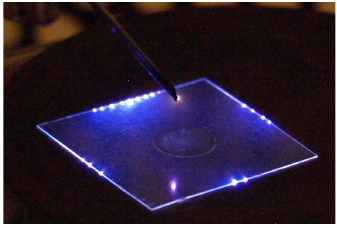
Recovery and resilience plan.


In the past years, the plasma community witnesses a fast development of bio-medical applications of cold atmospheric pressure plasmas, since cold plasmas provide multiple agents that can efficiently kill bacteria and other hazardous microbes, and cause multiple biomedical and therapeutic effects in higher organisms. Plasma generated by the discharges studied in our group (section 1.) was also successfully applied for the bio-decontamination of water (section 2.2).
In biomedical applications, the fundamental research to assess the roles of various plasma agents involved is very important. At present, the major role in atmospheric pressure plasmas generated in air is typically attributed to reactive oxygen and nitrogen species (RONS) (section 2.3). The aqueous RONS are formed from dissolved NO, NO2, O3 and OH radicals generated by the plasma in the gas phase (section 2.4).
Reactive species in the gas phase by plasma can kill bacteria not only in the liquid water, the cold plasma can be also used for treatment of surfaces and biofilms (sections 2.5 - 2.7). Cold plasma effects on eukaryotic cells (section 2.8) and and biomolecules was also investigated (section 2.9).